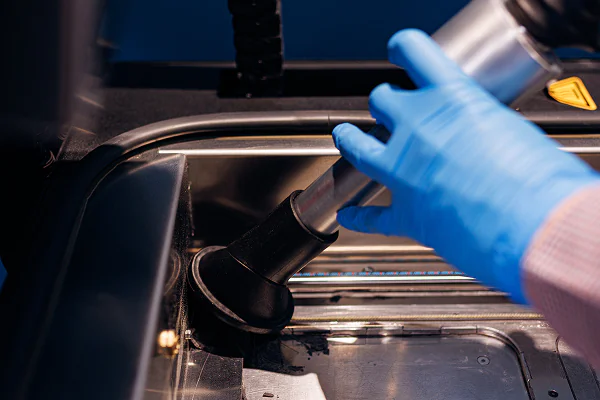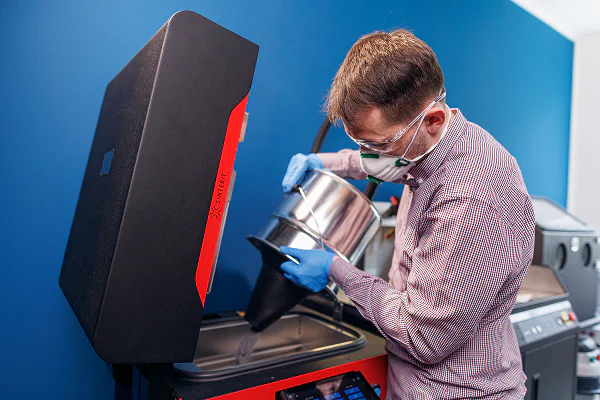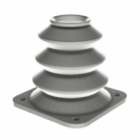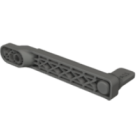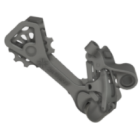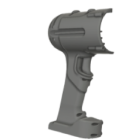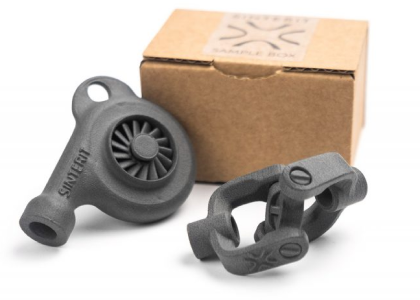Suzy vs Lisa X: which SLS 3D printer is right for your research?
As 3D printing becomes an essential part of the modern research lab, the expectations placed on additive manufacturing technology have evolved. It’s no longer just about printing prototypes. Today’s researchers demand precision, reliability, and – perhaps most importantly – flexibility. Whether you’re testing new materials, validating mechanical performance, or designing experimental processes, the tools you use can make or break your work.
Sinterit offers two standout models designed with researchers in mind: Lisa X and Suzy. At first glance, these printers may seem similar – they share a sleek form factor and a comparable build volume – but under the surface, they cater to very different research needs.
Let’s dive into what sets them apart and help you decide which one aligns better with your goals in the lab.
The growing role of SLS in research labs
SLS technology offers a unique advantage in research environments: it allows for the creation of functional, highly detailed parts without the need for support structures. Whether you’re in engineering, material science, biomedical research, or even art and design, SLS opens up a world of possibilities.
But research isn’t one-size-fits-all. Some projects require a rock-solid, repeatable process with standard materials. Others demand freedom – freedom to tweak, experiment, and push boundaries. That’s exactly where Lisa X and Suzy part ways.oughput and better material utilization. SLS also offers excellent mechanical properties – parts are strong, wear-resistant, and chemically stable. Materials like PA12, PA11, or flexible TPUs enable everything from housings to living hinges to snap-fit enclosures. The resulting components are often robust enough for end-use applications without requiring tooling or molds. It’s a safe step before investments requiring much higher entry costs.
Meet Suzy: precision and simplicity optimized for PA12
The Suzy is Sinterit’s latest addition, tailored for professionals who value consistency and speed over customization. It’s a closed-system SLS printer optimized exclusively for PA12 Industrial – a dependable nylon material known for its strength and versatility.
Suzy’s strength lies in its focus – it delivers an incredibly smooth and efficient printing experience. Its print speed (up to 20 mm/h) is among the best in its class, and the 75 µm layer resolution ensures impressive detail and surface finish.
For research teams focused on part performance, repetitive testing, or post-processing studies, Suzy is a reliable workhorse. Think mechanical testing under varied conditions, lifecycle studies, or educational labs needing a hassle-free yet powerful SLS tool.
But this focus comes with a tradeoff: no access to open materials or print parameter adjustments. So, if your research involves developing or testing new polymers, SUZY will feel limited.
Learn more about pre-configured platforms for SLS 3D printing in research.
Lisa X: a researcher’s playground
If Suzy is a scalpel, Lisa X is a Swiss Army knife. It’s a fully open SLS system designed for researchers who need total control over the 3D printing process. From laser power and scan strategy to temperature profiles and material blends, Lisa X lets you experiment with every aspect of SLS printing.
It supports a wide variety of materials out of the box- including PA11, PA12, polypropylene, and elastomers like Flexa – plus the ability to use custom or third-party powders. This makes Lisa X a dream machine for labs pushing the boundaries of additive manufacturing.
Whether you’re working on biodegradable polymers, conductive composites, or entirely new formulations, Lisa X enables you to fine-tune parameters and collect granular data – crucial for experimental validation and academic publishing.
It’s not quite as fast as Suzy, but for many research teams, the flexibility far outweighs the difference in speed.
Explore how open SLS supports 3D research and experimental development.
Which printer should you choose?
Choose Suzy if:
- You need reliable, repeatable results using a well-established material.
- Your research focuses on mechanical performance, durability, or process consistency.
- You’re working in an educational or prototyping setting where ease of use is key.
- You don’t need to experiment with custom powders or sintering parameters.
Choose Lisa X if:
- Your lab is pushing into advanced applications like biomedical devices, flexible parts, or smart materials.
- You’re involved in material innovation or developing new SLS-compatible powders.
- You need open parameter access for scientific exploration or process optimization.
Final thoughts: a matter of research philosophy
At the end of the day, the choice between Suzy and Lisa X reflects your lab’s research philosophy.
If your focus is on consistency, speed, and simplicity, SUZY will meet your needs with minimal setup and maximum reliability. But if you’re venturing into uncharted territory – developing the next generation of printable materials or designing intricate experimental protocols – Lisa X offers the sandbox you need to explore, iterate, and innovate.
Both printers stand as testament to how SLS technology is reshaping research. Whether you’re building the future of aerospace materials or running a student-led design lab, there’s a printer ready to bring your ideas to life.
FAQ: compact SLS printers for production
Suzy is a closed-system SLS printer optimized for repeatability with PA12 Industrial, offering high speed and ease of use. Lisa X, in contrast, is a fully open-system printer that gives researchers access to custom materials and full control over printing parameters—ideal for experimental and innovation-driven work.
Suzy is best suited for researchers who prioritize reliability, speed, and simplicity. It’s ideal for labs focused on mechanical testing, durability studies, and educational programs where standardized outputs and hassle-free operation are critical.
Yes. Lisa X is designed for experimentation and innovation. It allows full access to print parameters and supports a broad range of materials, including third-party and custom powders. This makes it perfect for material development, composite testing, and academic research.
Suzy is a single-material platform specifically engineered for PA12 Industrial. This nylon-based powder is known for its mechanical strength and versatility, making it ideal for repeatable, performance-driven applications.
Absolutely. Lisa X provides an open platform where users can adjust laser power, scan strategies, temperature profiles, and more. It supports multiple materials, including PA11, PA12, PP, and elastomers like Flexa, as well as custom and experimental powders.
Suzy is faster, reaching printing speeds of up to 20 mm/h, which is excellent for quick turnarounds in routine research tasks. Lisa X is slightly slower but it compensates with unmatched experimental freedom.
Yes. Suzy’s streamlined interface, high print reliability, and minimal setup requirements make it ideal for use in academic labs, prototyping studios, and teaching environments focused on repeatable outcomes rather than parameter-level experimentation.
No. Suzy does not support third-party or custom materials. It’s a closed-system printer designed for high-speed, reliable printing with PA12 only. For material development or custom formulations, Lisa X is the appropriate choice.
 Austria
Austria  Bosnia and Herzegovina
Bosnia and Herzegovina  Bulgaria
Bulgaria  Croatia
Croatia  Czech Republic
Czech Republic  Denmark
Denmark  Estonia
Estonia  Finland
Finland  France
France  Germany
Germany  Greece
Greece  Hungary
Hungary  Ireland
Ireland  Italy
Italy  Latvia
Latvia  Lithuania
Lithuania  Poland
Poland  Portugal
Portugal  Romania
Romania  Slovakia
Slovakia  Slovenia
Slovenia  Spain
Spain  Sweden
Sweden  Switzerland
Switzerland  United Kingdom
United Kingdom  Ukraine
Ukraine  China
China  Hong Kong
Hong Kong  India
India  Israel
Israel  Japan
Japan  Malaysia
Malaysia  Philippines
Philippines  Saudi Arabia
Saudi Arabia  South Korea
South Korea  Taiwan
Taiwan  Thailand
Thailand  Turkey
Turkey  United Arab Emirates
United Arab Emirates  Egypt
Egypt  South Africa
South Africa  Tunisia
Tunisia  Canada
Canada  Mexico
Mexico  United States
United States  Brasil
Brasil  Colombia
Colombia  Australia
Australia  New Zealand
New Zealand 
